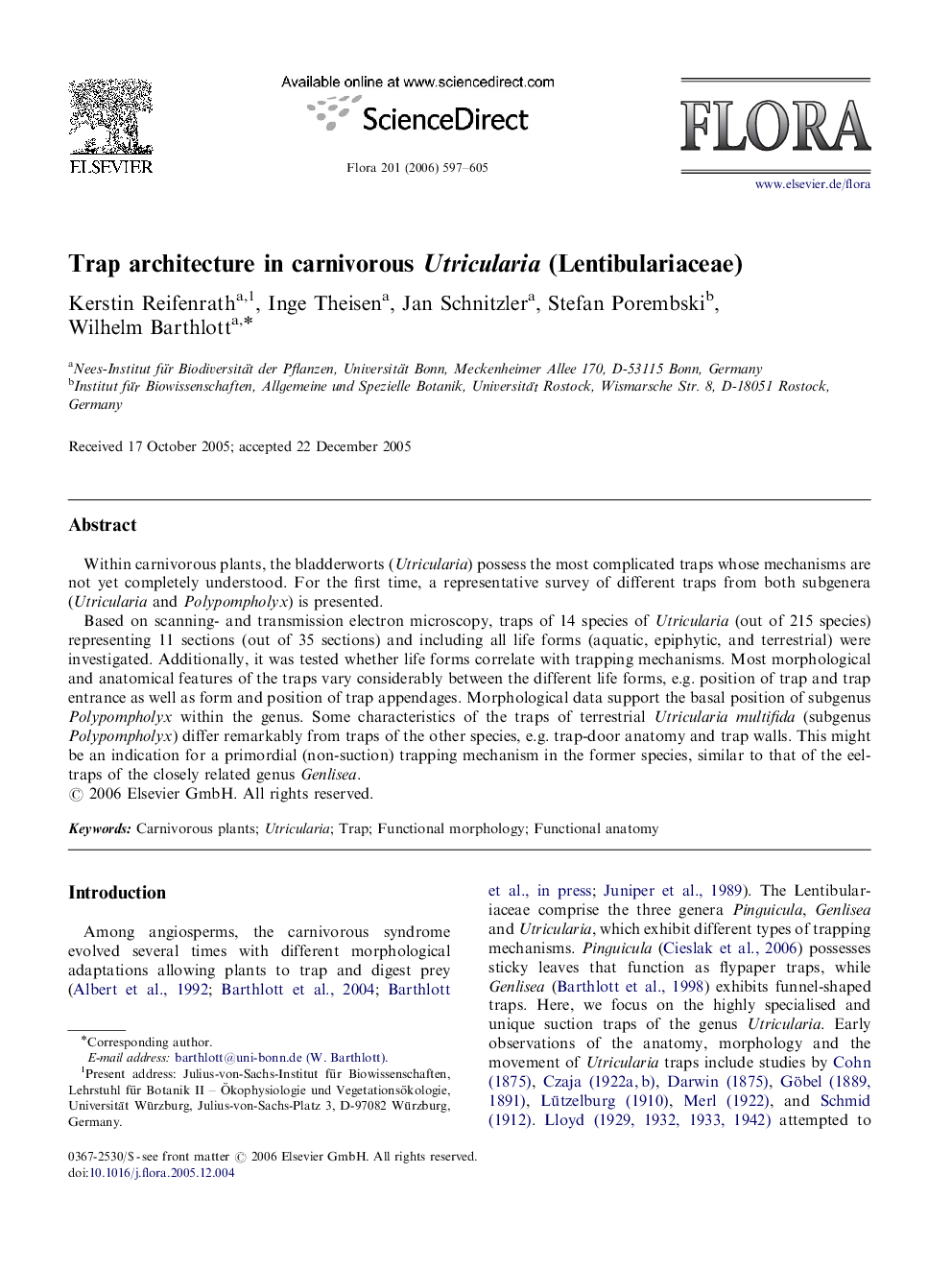| Article ID | Journal | Published Year | Pages | File Type |
|---|---|---|---|---|
| 2180224 | Flora - Morphology, Distribution, Functional Ecology of Plants | 2006 | 9 Pages |
Within carnivorous plants, the bladderworts (Utricularia) possess the most complicated traps whose mechanisms are not yet completely understood. For the first time, a representative survey of different traps from both subgenera (Utricularia and Polypompholyx) is presented.Based on scanning- and transmission electron microscopy, traps of 14 species of Utricularia (out of 215 species) representing 11 sections (out of 35 sections) and including all life forms (aquatic, epiphytic, and terrestrial) were investigated. Additionally, it was tested whether life forms correlate with trapping mechanisms. Most morphological and anatomical features of the traps vary considerably between the different life forms, e.g. position of trap and trap entrance as well as form and position of trap appendages. Morphological data support the basal position of subgenus Polypompholyx within the genus. Some characteristics of the traps of terrestrial Utricularia multifida (subgenus Polypompholyx) differ remarkably from traps of the other species, e.g. trap-door anatomy and trap walls. This might be an indication for a primordial (non-suction) trapping mechanism in the former species, similar to that of the eel-traps of the closely related genus Genlisea.
